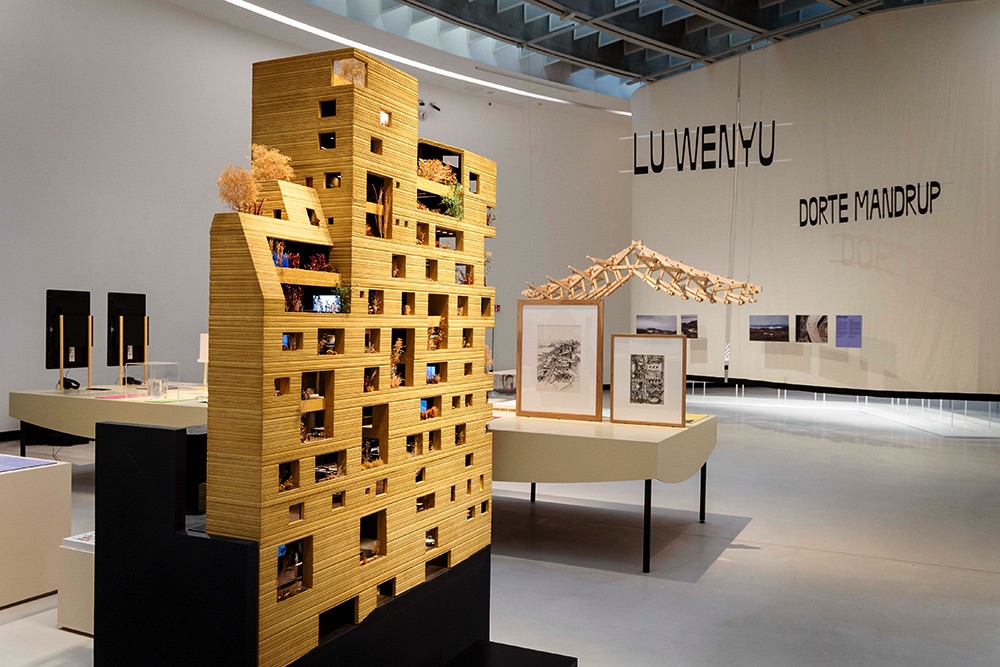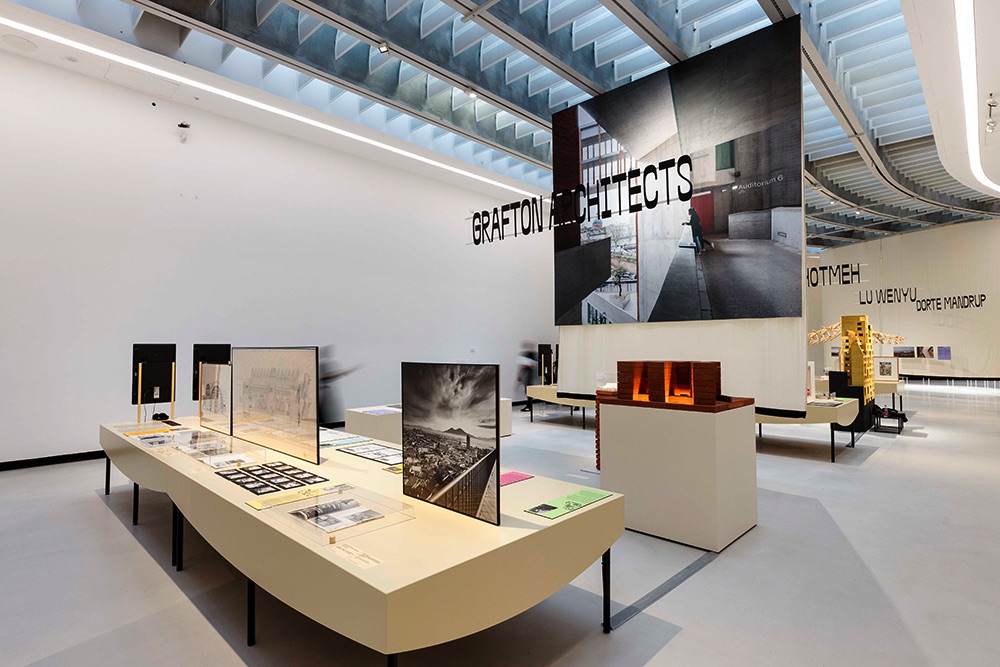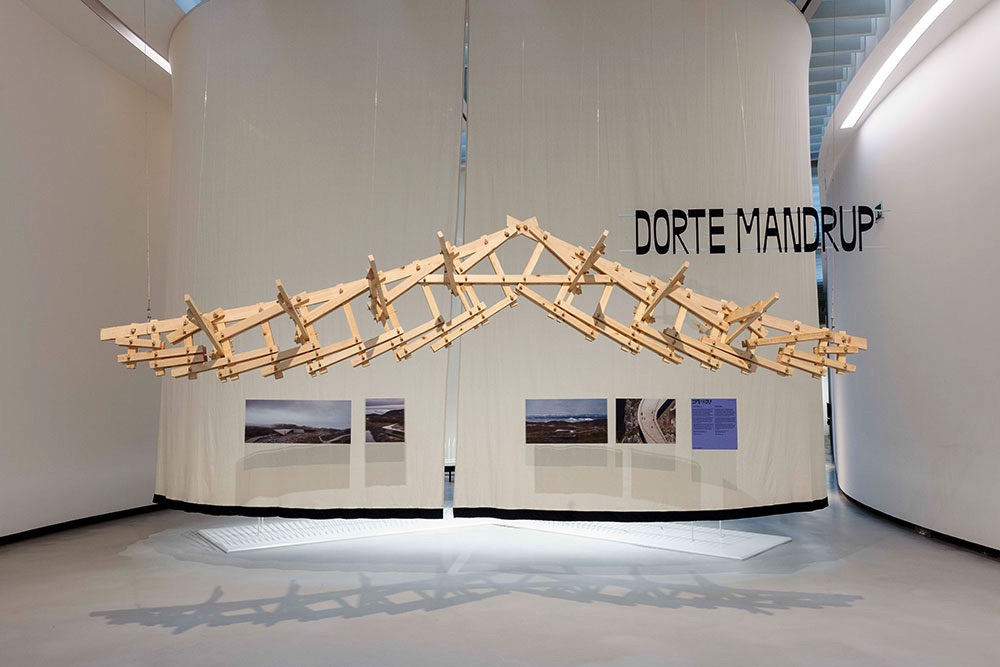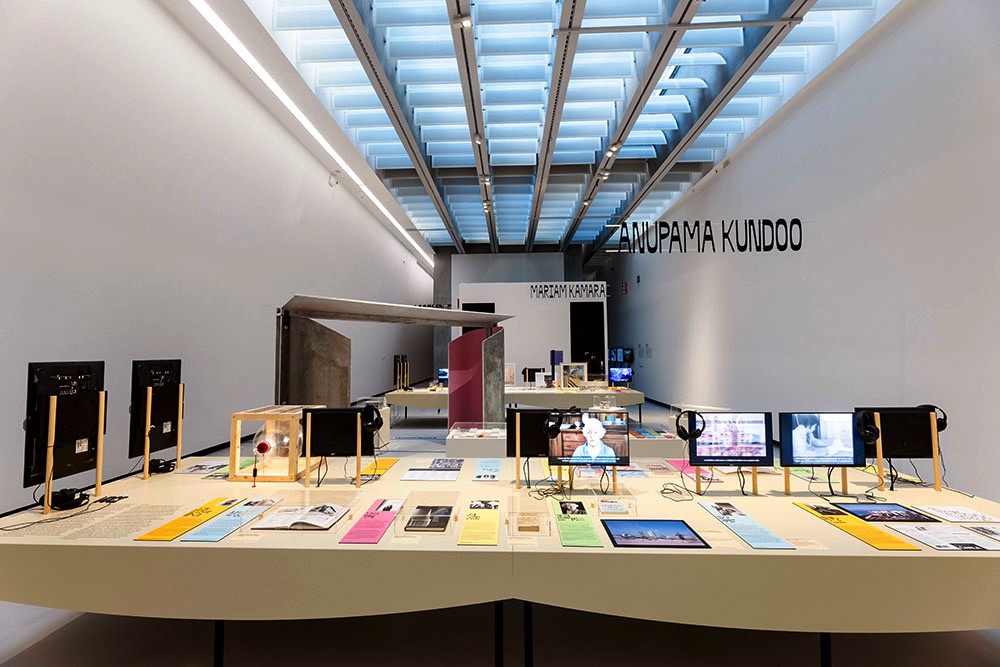
At MAXXI Museum in Rome the exhibition Good News Women in architecture will be on view until September 11 2022, curated by Pippo Ciorra, Elena Motisi and Elena Tinacci. The exhibition aims to document the role of women in the importance of architecture in the contemporary world and over the course of more than a century, during which the figure of the architect has profoundly changed. Departing from the stereotype of the architectural firm with one man in charge, in the 1900s women began to be more and more present in the firms until today, when they even occupy total leadership roles. What characterizes our time is a rather heterogeneous landscape made of couples, collectives and variable teams.
Good News is a historical and research exhibition that has engaged the Department of Architecture of MAXXI for many months for the selection of the protagonists of architecture, for the choice of materials and methods to make architecture known to the general public. Many of the exhibited materials will remain part of the museum’s collection after the end of the exhibition. The collection will be enriched with works created by women in an attempt by MAXXI to achieve a gender balance from this point of view as well.


The exhibition is the result of a strong decision: presenting to the public only a part of the international architectural world, that of women. A decision born from the desire to show a glimpse of a still little known reality and to clearly affirm its presence. Women who are examples, models and references, belittled for too long, overshadowed, associated with male figures in order to have their success validated. Good News introduces enthusiasts and novices to many women architects ad attempts to free us from the prejudice, unfortunately still very widespread, that male and female roles are separate, and it suggests that the significant presence of women in architecture will make architecture itself more capable of representing changes in society and responding to the needs of contemporaneity. In a certain sense, if in 2022 there is a need for an exhibition that fulfills this task, there is still a long way to go for a concrete and felt gender equality. Reality has changed profoundly since Plautilla Bricci, known as the Architectress, born in Rome in 1616, managed to enter the Accademia di San Luca and became the first female architect in history. Still, women are still often invisible and underestimated if it is the initiative of an institution to legitimize them.
Sections
Good News is divided into four thematic sections: Stories, Practices, Narrations and Visions.
Stories is an archive of female figures, ninety names, fundamental and lesser-known women that span the 1900s and who have often been deprived of the official role of architect. These are women that have marked radical turning points: from the Finnish Signe Hornborg, first graduate in architecture in 1890, to Elena Luzzatto, the first woman to get an architecture degree in Italy, and Gae Aulenti, Charlotte Perriand, Lina Bo Bardi, Franca Helg, Cini Boeri and Zaha Hadid (who won the first woman Pritzker Prize in 2004) to the most interesting examples of contemporary architecture.
Pratiche identifies eleven women who are considered exemplary cases for the quality of their architecture, characterized by different ways of interpreting the profession and the struggle for professional equality. Among them: Kazuyo Sejima, Benedetta Tagliabue, Elizabeth Diller and Grafton Architects.


Narrazioni consists of twelve interviews with female protagonists of the sector, professionals and researchers, who were asked to express their point of view on the evolution of the role of women in architecture.
Visioni originated from a workshop, the Architecture Film Summer School, organized by MAXXI and aimed at creating works on the relationship between gender and space. It consists of five videos that offer different interpretations of the theme, from the rewriting of the public space to the performance.
A further section, Unseen by Frida Escobedo, curated by Elena Motisi, closes the exhibition, inviting us to reflect on the invisibility of the female figure. The project presents the artist Anni Albers by telling a story: the construction of the Camino Real Hotel in Mexico for the 1968 Olympic Games. Anni Albers was the only female artist involved in this project and her work in that context had been forgotten. It was rediscovered in 2019 and reinterpreted by architect Frida Escobedo specifically for MAXXI.
The setting
The installation of Good News, curated by the architect Matilde Cassani, is a dynamic path that crosses Gallery 2 of the museum where alternating open spaces are inhabited by eight large tables, on which the Stories unfold (the titles of the thematic tables are: Prime Donne, Mise en Scéne, City of Women, Lady Manager, Nomadisms, Duets, Voices and Tracks), and spaces enclosed within white envelopes that contain the Practices.

Architectural models stand out in every part of the itinerary and in various sizes, from the small study model to the large model that relates to visitors in a more direct way. For example, the tables include the foam model of the extension of the Natural History Museum in New York, Studio Gang, the model of the ‘Stone Garden’ building by Lina Ghotmeh in Beirut and the cultural space ‘The Shed’ in New York by Elizabeth Diller. TV and headphones are available during the whole exhibition offering useful insights. It is a path full of history, current events, evocative impressions and inspirations. Room for introspection by Nigerian Miriam Kamara is a particularly fascinating installation: a box-like environment on whose black surfaces there are objects from the Tuareg and photographs about the colonization campaign of the Congo; this gives us a suggestive snapshot of the context in which the architect lives and works. Anupama Kundoo, of Indian origin, presents research on environmental and economic sustainability with a focus on the use of fiber cement for prefabricated buildings.

Lessons
During the exhibition, MAXXI offers a new cycle of lessons: Stories of Architecture, with speakers Pippo Ciorra, Margherita Guccione, Mario Lupano and Paola Nicolin for four different appointments in February and March.